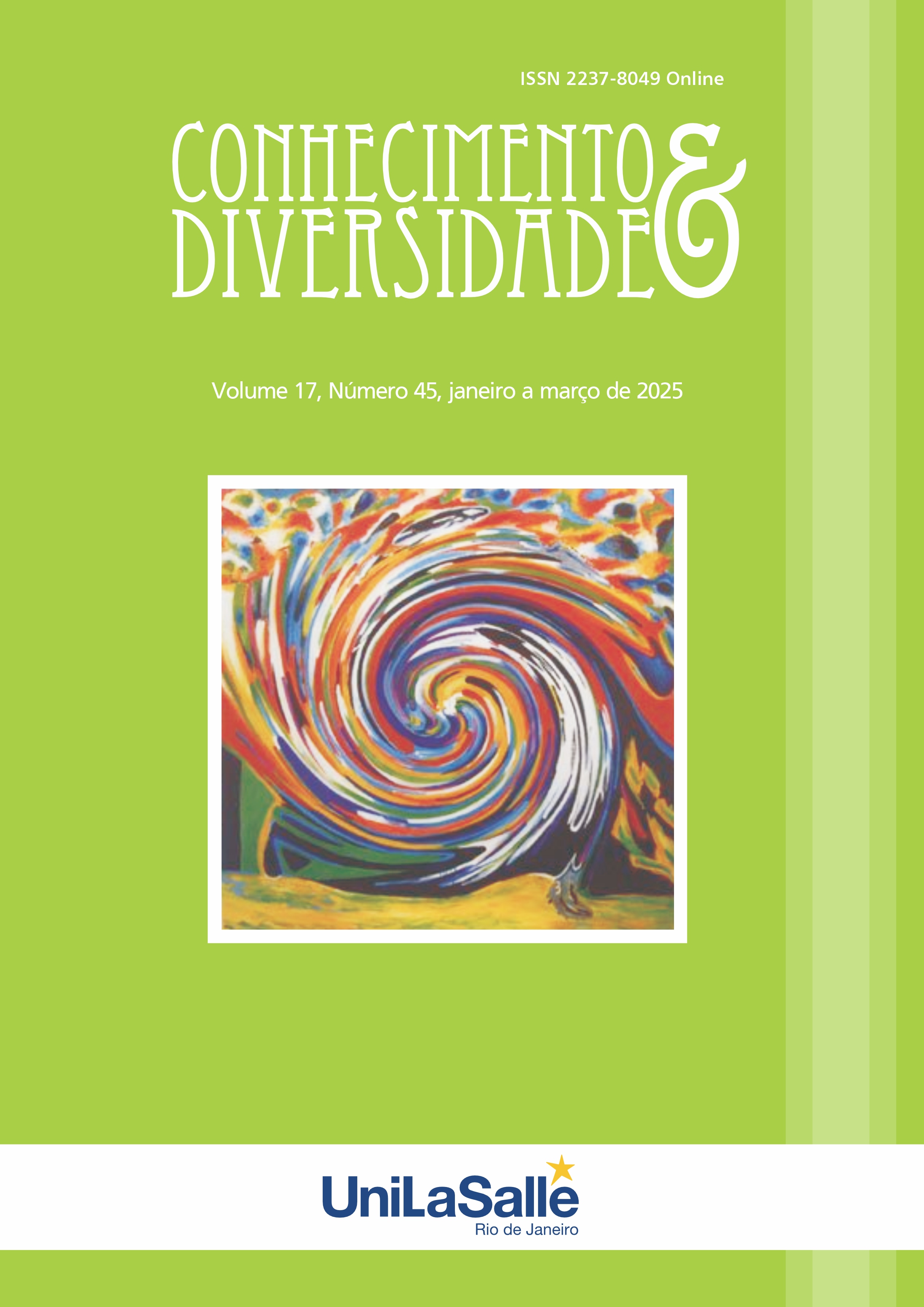SOUND SIMPLIFICATION PROCESSES AMONG NAJDI ARABIC LEARNERS OF ENGLISH
A PHONOLOGICAL ANALYSIS
DOI:
https://doi.org/10.18316/rcd.v17i45.12392Keywords:
English, Foreign Language, Najdi Arabic, Phonological Simplification, PhonologyAbstract
This paper investigated the phonological simplification processes employed by native speakers of Najdi Arabic to modify complex English consonant sequences. To that end, the study measured the frequency of each simplification process that appeared in the data and examined relevant characteristics. Upon their consent, 42 participants with varying levels of English proficiency were invited to produce 21 English words that contained consonant sequences in different positions, including initial, medial, and final. Furthermore, the sequences included groups of two, three, and four consonants. The data were recorded and analyzed using the Praat software package to identify the simplification strategies that appeared. The findings revealed five main strategies employed by Najdi speakers. These strategies were insertion, voicing, deletion, metathesis, and fricativization. Among these processes, insertion emerged as the most frequently employed and was mostly found in two-consonant sequences, even though modifications introduced on three consonant sequences dominated in general. The second-most common strategy was voicing, followed by deletion. In contrast, metathesis and fricativization were relatively rare. In addition, the participants would sometimes combine two strategies rather than using only one to deal with a problematic consonant sequence.
References
Alkhonini, O. A., & Wulf, D. J. (2018). “The rain in Spain” updated? An elocution drill for efficiently teaching English consonant clusters. Open Journal of Modern Linguistics, 8, 231–241. https://doi.org/10.4236/ojml.2018.86020
Best, C. T., & Tyler, M. D. (2007). Nonnative and second-language speech perception: Commonalities and complementarities. In O.-S. Bohn & M. J. Munro (Eds.), Language experience in second language speech learning: In honor of James Emil Flege (pp. 13–34). John Benjamins Publishing Company.
Blevins, J. (2004). Evolutionary phonology: The emergence of sound patterns. Cambridge University Press.
Boersma, P., & Weenink, D. (2025). Praat: Doing phonetics by computer (Version 6.4.26). https://www.fon.hum.uva.nl/praat/
Broselow, E. (1983). Non-obvious transfer: On predicting epenthesis errors. In S. Gass & L. Selinker (Eds.), Language transfer in language learning (pp. 269–280). Newbury House.
Broselow, E., & Kang, Y. (2013). Phonology and speech. In J. Herschensohn & M. Young- Scholten (Eds.), The Cambridge handbook of second language acquisition (pp. 529–554). Cambridge University Press.
Bybee, J. L. (2001). Phonology and language use. Cambridge University Press.
Chomsky, N. (1975). Reflections on language. Pantheon Books.
Chomsky, N. (1986). Knowledge of language: Its nature, origin, and use. Praeger Publishers.
Chomsky, N., & Halle, M. (1968). The sound pattern of English. Harper & Row.
Comrie, B. (1971). Language universals and linguistic typology. The University of Chicago Press.
Derwing, T. M., & Munro, M. J. (2005). Second language accent and pronunciation teaching: A research‐based approach. TESOL Quarterly, 39(3), 379–397. https://doi.org/10.2307/3588486
Flege, J. E. (1987). The production of “new” and “similar” phones in a foreign language: Evidence for the effect of equivalence classification. Journal of Phonetics, 15(1), 47–65.
Flege, J. E. (1995). Second-language speech learning: Theory, findings, and problems. In W. Strange (Ed.), Speech perception and linguistic experience: Theoretical and methodological issues (pp. 229–273). York Press.
Goldstein, L., Chitoran, I., & Selkirk, E. (2007). Syllable structure as coupled oscillatormodes: Evidence from Georgian vs. Tashlhiyt Berber. Proceedings of the 16th International Congress of Phonetics Sciences (pp. 241–244). University of Saarbrucken. https://sail.usc.edu/~lgoldste/ArtPhon/Papers/Week%2011/TB-G_rev_all_jun11.pdf
Greenberg, J. (1963). The universals of language (2nd ed.). MIT Press.
Hayes, B. (2009). Introductory phonology. Wiley-Blackwell.
Hockett, C. F. (1955). The phoneme: Its nature and use. The University of Chicago Press.
Huffman, M. (1995). The role of assimilation in phonological systems. In J. Goldsmith (Ed.), The handbook of phonological theory (pp. 408–423). Blackwell Publishers.
Igaab, Z. (2018). A contrastive study of metathesis in English and Arabic. Journal of Education College Wasit University, 1(7). http://dx.doi.org/10.31185/eduj.Vol1.Iss7.471
Joos, M. (1957). The five clocks. The University of Chicago Press.
Kenstowicz, M. (1994). Phonology: A cognitive view. The University of Chicago Press.
Kiparsky, P. (2003a). Syllables and moras in Arabic. In C. Fery & R. Van de Vijver (Eds.), The syllable in optimality theory (pp. 147–182). Cambridge University Press.
Kiparsky, P. (2003b). The phonological basis of change. In B. D. Joseph & R. D. Janda (Eds.), The handbook of historical linguistics (pp. 311–342). https://doi.org/10.1002/9781405166201.ch6
Labov, B. (1972). Sociolinguistic patterns. University of Pennsylvania Press.
Lin, S. (2015). Mandarin Chinese: A functional reference grammar. University of California Press.
Lindblom, B. (1990a). Explaining phonetic variation: The role of subtle optimizations. In W. J. Hardcastle & A. Marchal (Eds.), Speech production and speech modeling (pp. 403–439). Kluwer Academic Publishers.
Lindblom, B. (1990b). Phonetic content in phonology. PERILUS, 11, 101–118. https://www.diva-portal.org/smash/get/diva2:322882/FULLTEXT01.pdf
Lindblom, B. (1998). Systemic constraints and adaptive change in the formation of sound structure. In J. R. Hurford, M. Studdert-Kennedy, & C. Knight (Eds.), Approaches to the evolution of language: Social and cognitive bases (pp. 242–264). Cambridge University Press.
Mitchell, T. F. (1960). Prominence and syllabication in Arabic. Bulletin of the School of Oriental and African Studies, 23(2), 369–389. https://www.jstor.org/stable/609703
Prince, A., & Smolensky, P. (2004). Optimality theory: Constraint interaction in generative grammar. Blackwell Publishing.
R Core Team. (2024). R: A language and environment for statistical computing (Version 4.4.2). R Foundation for Statistical Computing.
Rose, S. (2000). Epenthesis positioning and syllable contact in Chaha. Phonology, 17(3), 397–425. https://doi.org/10.1017/S0952675701003931
Tranel, B. (1987). The sounds of French: An introduction. Cambridge University Press.
Trubetskoy, N. (1939). Principles of phonology (C. A. M. Baltaxe, Trans.). University of California Press.
Weinberger, S. (1987). The influence of linguistic context on syllable simplification. In G. Ioup & S. H. Weinberger (Eds.), Interlanguage phonology: The acquisition of a second language sound system (pp. 401–417). Newbury House.
Downloads
Published
Issue
Section
License
Copyright (c) 2025 Omar Alkhonini

This work is licensed under a Creative Commons Attribution 4.0 International License.
As recommended by the Public Knowledge Project, RCD adopts for its articles a CREATIVE COMMONS Attribution CC BY 4.0 license.
This license allows others to distribute, remix, adapt and build upon your work, even commercially, as long as they credit you for the original creation.
This is the most appropriate license offered.
Recommended for maximum dissemination and use of licensed materials.



